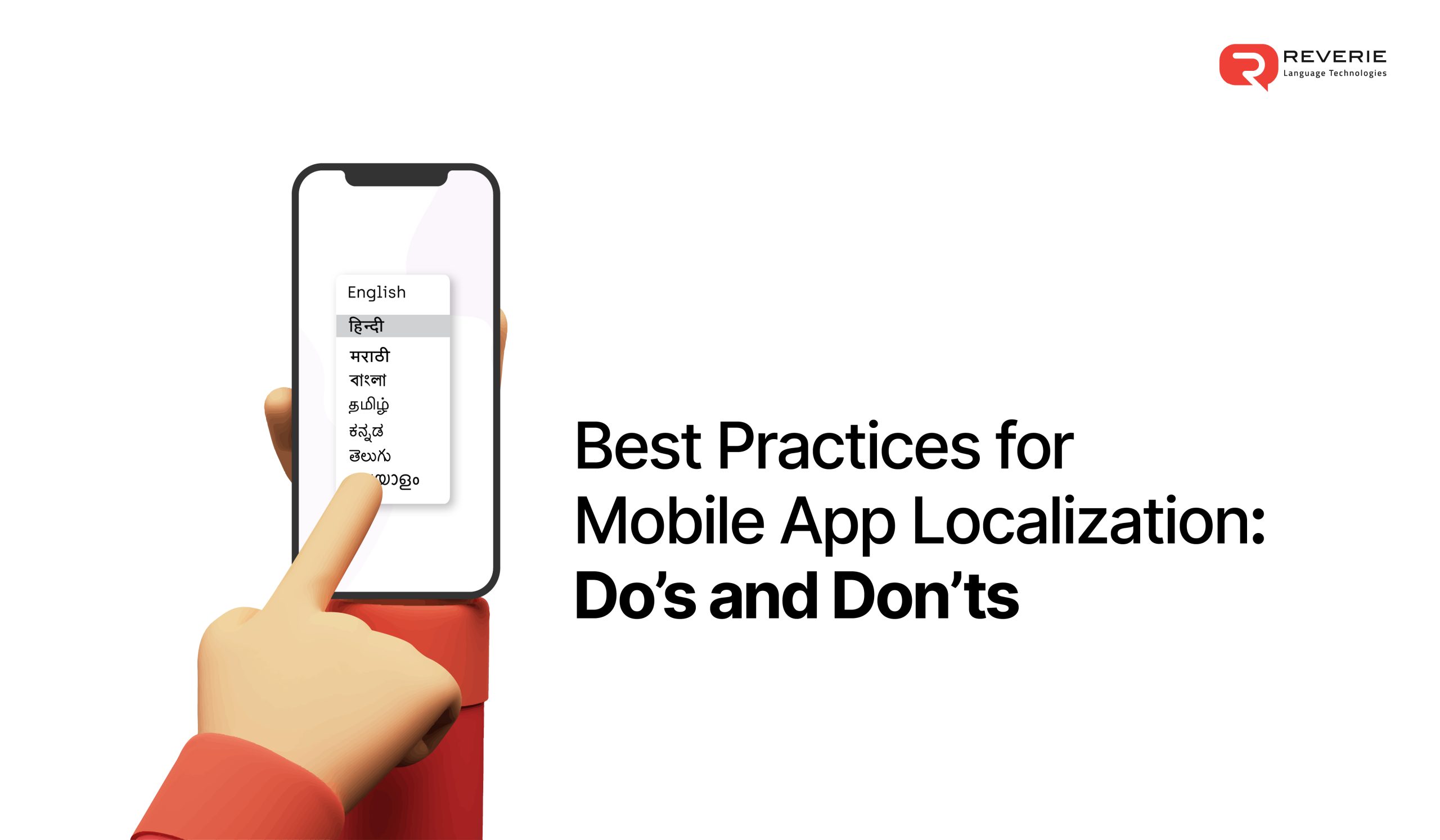Apps today are built for a global presence, but too often, they miss the mark when it comes to local relevance. Being downloadable in another country doesn’t mean being usable or embraced. Translation might change the language, but localisation changes the experience.
Where translation converts words, localisation transforms the entire interaction, aligning the app with regional culture, user habits, and expectations. Internationalisation (i18n) prepares an app for multiple languages from the start, while Localisation (L10n) ensures it feels native to each audience. A prime example is Netflix, which didn’t just translate its content but invested in region-specific shows and culturally relevant storytelling, fueling its global dominance.
For mobile apps, the same principle applies—success isn’t about reaching new markets; it’s about making users feel at home in them. Here’s a list of mobile app localisation best practices that can enable businesses to speak every user’s language—not just in words, but in experience.
Prioritise Localisation Over Translation
Expanding to global markets requires more than just translating an app’s content—it demands localisation, which ensures that language, cultural nuances, and user experience align with the target audience. Businesses that treat localisation as a strategic growth asset see stronger traction, deeper user trust, and measurable engagement uplift.
Localisation is about adapting an app holistically, including:
- Cultural relevance: Understanding how humor, colors, and symbols vary by region (e.g., white is associated with purity and weddings in Western cultures, but in India and many East Asian countries, it is traditionally worn during mourning.).
- Legal & compliance factors: Adapting terms of service, privacy policies, and content regulations (e.g., India’s IT Act has strict data localisation requirements).
- Local currency & payment methods: Supporting preferred payment gateways like Paytm, UPI, and RuPay in India, or WeChat Pay in China.
- User behavior & preferences: Recognising how Indian consumers prefer cash-on-delivery options, while Western users lean towards digital wallets and credit cards.
For instance, a localisation failure can be costly—KFC’s slogan “Finger Lickin’ Good” was mistranslated in China as “Eat Your Fingers Off,” harming its brand reputation. Businesses must invest in localisation as a strategic advantage, not an afterthought.
Design a Multilingual UI/UX from the Start
A poorly adapted UI can break user experience, create confusion, and lower retention rates. An app’s design should be flexible and adaptable to accommodate multiple languages and cultural preferences without compromising usability.
- Plan for text expansion & contraction: English-to-German translations expand text by 35%, while Korean and Hindi translations may contract by 10-15%. Fixed UI elements can disrupt readability.
- Implement RTL (Right-to-Left) language support: Arabic and Hebrew require mirrored navigation layouts and adjusted UI elements.
- Optimise visuals, colors, and icons: White represents purity in Western markets but is associated with mourning in China and India. Icons and emojis should resonate with local culture to prevent misinterpretations.
- Ensure dynamic layouts: Use auto-resizing fonts, adaptive text wrapping, and scalable UI components to maintain a seamless design across all languages.
An app that feels native to users drives engagement and conversion rates. India’s digital payment boom is a great example—apps like Google Pay and PhonePe localised their UI to support multiple Indian languages, leading to massive adoption.
Build a Scalable, Localisation-Ready App Architecture
Localisation should be integrated into the app architecture from the start, not added as a patchwork later. Internationalisation (i18n) ensures that the app structure supports multiple languages and regional preferences efficiently. Research shows that localised apps see a 42% increase in click-through rates and a 22% boost in conversion rates.
- Use Unicode (UTF-8) encoding: Supports scripts from Latin, Devanagari (Hindi), Mandarin, and Arabic, ensuring correct character rendering.
- Avoid hardcoded text: Store all text strings in external localisation files instead of embedding them in the app’s codebase.
- Enable locale-based dynamic content: Ensure the app automatically adjusts date formats, currencies, and measurement units for different regions.
- Optimise backend for multilingual data handling: Indian addresses follow a different format than Western addresses, requiring adaptive form fields.
- Implement Over-the-Air (OTA) updates: Allows real-time language updates without requiring a full app release.
For example, Netflix India introduced a low-cost mobile-only subscription after analysing Indian market behavior. Such localisation strategies enhance user retention and expand market reach.
Optimise App Store Listings for Global Markets
Localisation is incomplete without App Store Optimisation (ASO), a critical driver of app discoverability and user acquisition across diverse markets.
- Localise app titles, descriptions, and keywords: Instead of direct translations, research market-specific search terms. For instance, Indian users searching for “bill payment” may use “Bijli Bill” (electricity bill) instead of “Utility Payment”.
- Use culturally relevant visuals: Localised screenshots and preview videos improve conversion rates. A gaming app featuring Indian-themed avatars or Bollywood elements will perform better in India than generic Western visuals.
- Adapt metadata for regional preferences: Highlight features that matter to local audiences. In India, “lightweight apps” that consume less data perform better due to varying internet speeds.
- Encourage localised user reviews: Users trust reviews in their native language, and apps with local-language ratings rank higher in app stores.
Localisation makes an app more discoverable, engaging, and relevant to different markets, ensuring higher install and retention rates.
Conduct Rigorous Localisation Testing Before Launch
Poor localisation can lead to embarrassing errors, broken UI, and cultural insensitivity, damaging an app’s reputation. Comprehensive mobile app localisation testing is essential to ensuring a smooth user experience across languages and regions.
- Perform linguistic testing: Ensure translations convey the correct meaning and maintain brand consistency.
- Run functional UI/UX testing: Validate text rendering, RTL adjustments, and layout integrity across multiple devices and screen sizes.
- Use pseudo-localisation: Test text expansion and contraction by inserting placeholder text to identify UI breakage before launching in a new language.
- Validate culturally sensitive content: A thumbs-up gesture is positive in Western markets but offensive in some Middle Eastern countries.
- Test on real devices in different regions: Emulators cannot fully simulate local network conditions, fonts, and region-specific behavior.
For instance, e-commerce apps launching in India must test localised product details. Failure to do so results in cart abandonment and lost revenue.
Implement Continuous Localisation for Long-Term Growth
Localisation is not a one-time effort—user preferences, cultural trends, and regulations evolve, requiring constant adaptation. Brands that continuously refine their localisation strategies see better engagement and long-term success.
- Automate translation updates with mobile app localisation service: Improves efficiency while maintaining translation quality.
- Monitor user feedback in different regions: Adapt to market preferences, emerging trends, and cultural shifts.
- Regularly update app store listings: Ensure metadata reflects seasonal events, holidays, and regional promotions (e.g., special Diwali offers in India).
- Optimise seasonal and promotional content: Localised campaigns for events like Navratri, Ramadan, or Chinese New Year drive engagement.
Continuous localisation ensures an app remains competitive and culturally relevant, allowing businesses to scale effectively in global markets.
Conclusion
Mobile application localisation is a revenue-driving business strategy, not just a technical requirement. A well-localised app feels native, intuitive, and culturally aligned, ensuring higher engagement, stronger retention, and better monetisation across markets. From building a localisation-ready infrastructure to optimising UI/UX, ASO, and continuous updates, businesses must prioritise these top mobile app best practices.
With Reverie’s App Localisation Solutions and Anuvadak, brands can reduce manual effort by 90% while ensuring accuracy, efficiency, and scalability. Anuvadak’s intelligent interface streamlines content translation, proofreading, and real-time updates, allowing businesses to manage multilingual app experiences effortlessly.
Global users are looking for an app that understands them—make sure yours does. Book a free demo today and scale your app across multiple languages and regions!
Faqs
How does app localisation contribute to business growth?
Localisation improves conversion rates, user retention, and market reach by creating a native experience for users. Studies show that 84% of businesses see revenue growth after localising their app content. A localised app builds trust, reduces friction, and increases engagement, leading to higher monetisation.
What are the key technical requirements for a localisation-ready app?
Apps need Unicode (UTF-8) support, externalised text resources, dynamic content adaptation, and OTA updates for real-time localisation. Reverie’s platform automates these processes, ensuring smooth multilingual app management.
How can businesses ensure cultural accuracy in localisation?
Beyond translation, businesses must adapt date formats, currencies, colors, and symbols to fit regional norms. Reverie’s localisation solutions ensure cultural relevance with AI-driven linguistic and market-specific adaptations.
Why is App Store Optimisation (ASO) essential for multilingual growth?
Localised ASO improves discoverability, rankings, and downloads in different regions. Apps that optimise titles, keywords, descriptions, and visuals for local markets see a 25% revenue increase.
What is the role of continuous localisation in long-term success?
Static translations become outdated. Continuous localisation keeps apps aligned with market trends, language shifts, and user preferences. Reverie’s automated workflows ensure seamless updates across all regions.


